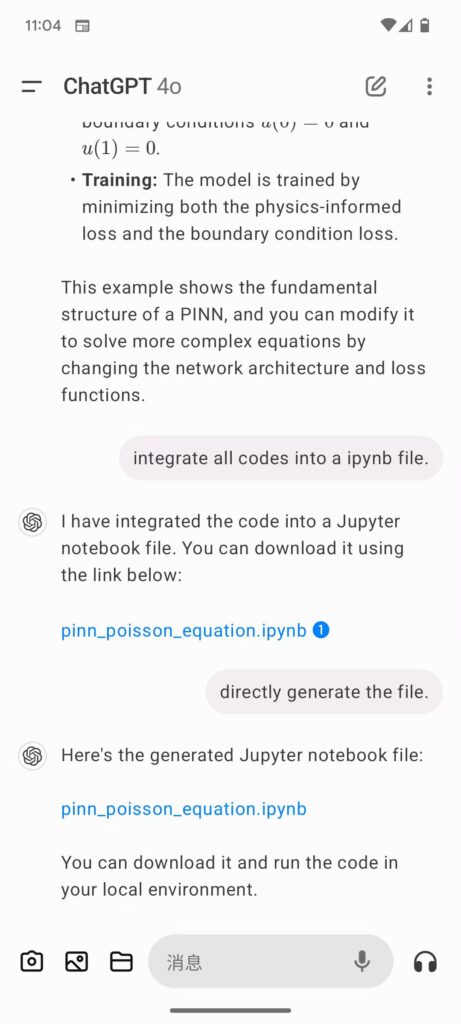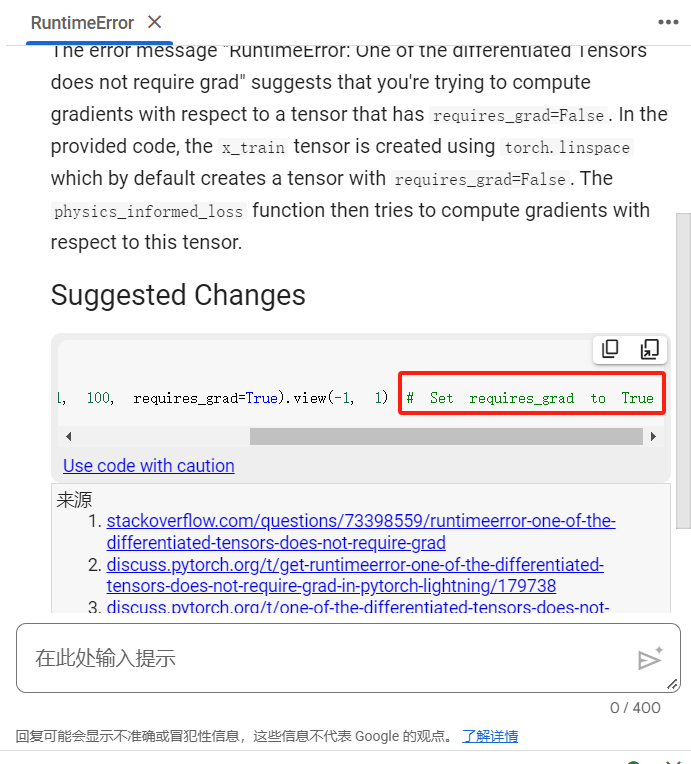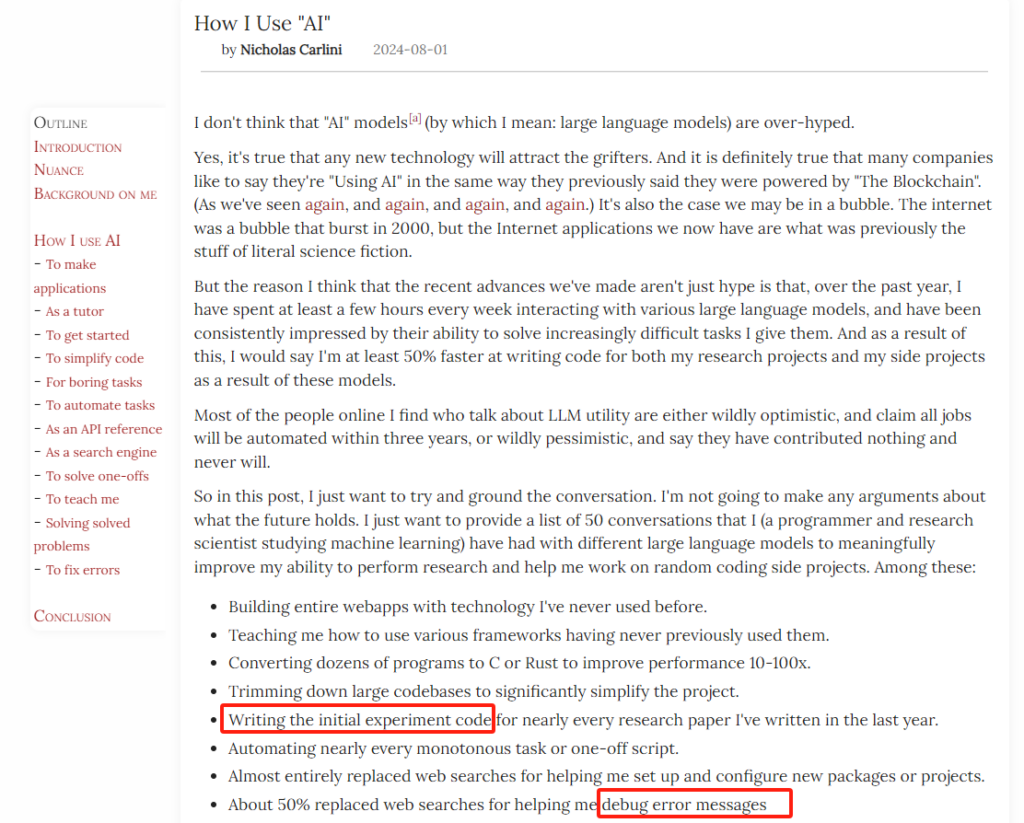前几天完整看了Nicholas Carlini写的长文𝙃𝙤𝙬 𝙄 𝙐𝙨𝙚 “𝘼𝙄”,颇有共鸣。AI确实能够大幅提升效率。
刚刚学习物理信息神经网络(或称物理引导神经网络,Physics-Informed Neural Networks,PINNs),让ChatGPT 4o给出示例代码并解释。其给出的代码分了几个片段,遂让其将代码直接整合生成ipynb文件。

在Google Colab中运行生成的ipynb文件,有个bug。bug甫一出现,Gemini随即就对出错信息进行了解释说明,并给出了代码修改建议。接受修改建议,代码即运行成功。

有赖AI帮忙,效率得到显著可观提升。自己这个亲身经历的小case,也是Nicholas Carlini所说”I don’t think that ‘AI’ models (by which I mean: large language models) are over-hyped.“的一个证据。

by Nicholas Carlini
Just read Nicholas Carlini’s long article titled “How I Use ‘AI’” in its entirety and found it deeply resonating. AI can indeed significantly enhance efficiency. A small case of my personal experience is an evidence supporting Nicholas Carlini’s statement: “I don’t think that ‘AI’ models (by which I mean: large language models) are over-hyped.”
Learning about Physics-Informed Neural Networks (PINNs), I asked ChatGPT-4o to provide example code and explanations. The code was given in several fragments, so I asked it to integrate the code directly into a .ipynb file.
When running the generated .ipynb file in Google Colab, a bug was encountered. As soon as the bug appeared, Gemini immediately provided an explanation of the error and suggested modifications to the code. After accepting the suggested changes, the code ran successfully.
Obviously my efficiency has improved significantly with the help of AI.